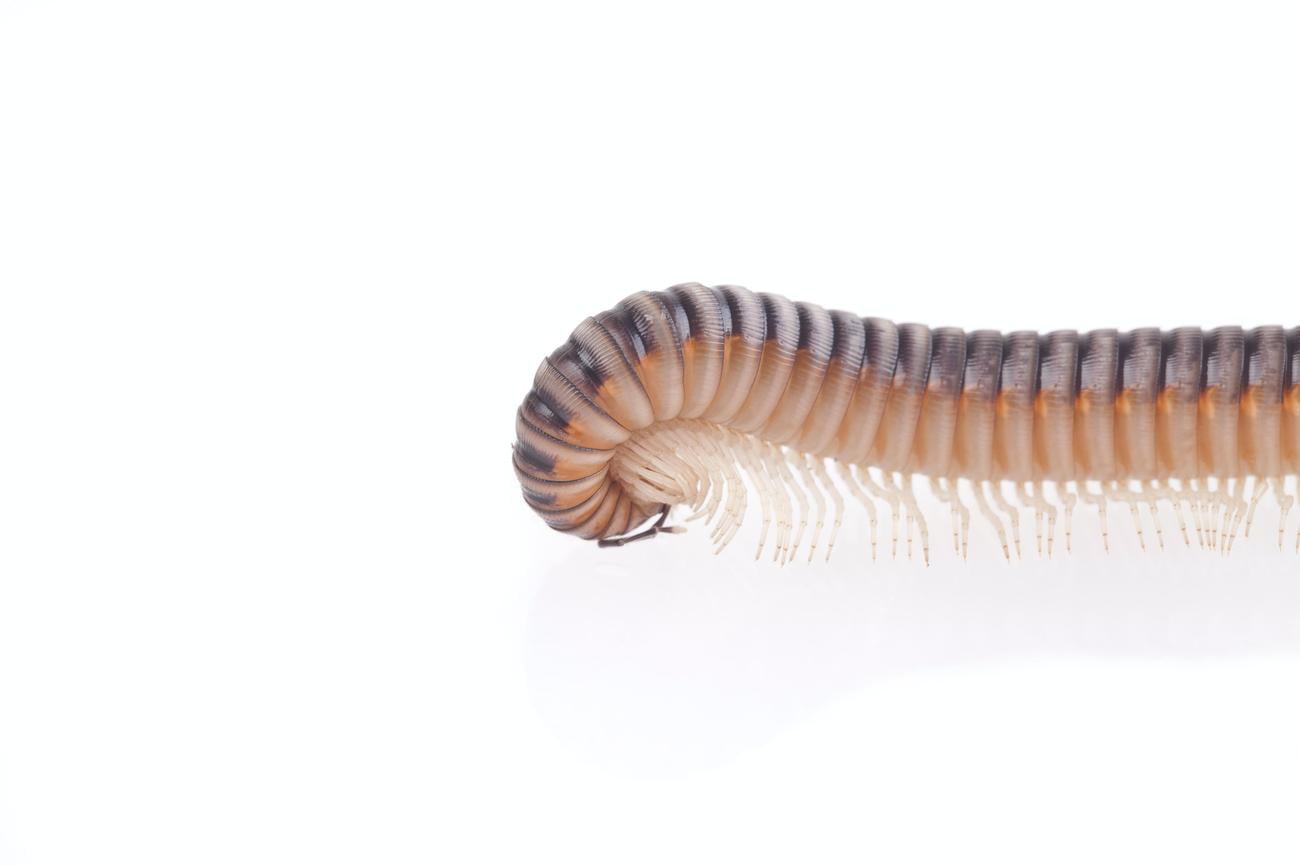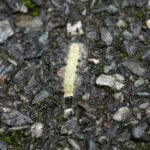Are you tired of waking up in the middle of the night to find a creepy, crawly centipede sharing your bed? Look no further! In this article, titled “Expert Tips: Keeping Centipedes Out of Your Bed,” I bring you a wealth of knowledge and practical strategies to ensure that you can sleep soundly without the unwelcome company of these leggy intruders. As a seasoned entomologist with years of experience in pest control, I have dedicated my career to helping individuals create safe and comfortable living environments. With a deep understanding of centipede behavior and proven strategies to prevent their intrusion, my expertise lies in providing effective solutions tailored to each unique situation. So prepare to bid farewell to centipedes in your bed as I share my expert tips and empower you to lead a pest-free life.

Keeping Centipedes Out of Your Bed
Are you tired of waking up to the unpleasant surprise of a centipede crawling in your bed? Don’t worry, I’ve got you covered! As a seasoned entomologist specializing in pest control, I have the expertise to help you keep those creepy crawlies far, far away from your sleeping space. In this article, I will share some expert tips on how to keep centipedes out of your bed, ensuring you can sleep soundly without their unwelcome company.
First things first, let’s talk about prevention. One of the most effective strategies to keep centipedes out of your bed is to set up barriers that prevent them from entering your home in the first place. This could involve placing door sweeps or weather stripping on your doors and windows, creating a tight seal that centipedes can’t penetrate. By fortifying these entry points, you can significantly reduce the chances of these critters sneaking into your bedroom.
Sealing cracks is another crucial step in preventing centipede intrusions. These agile pests can squeeze through even the tiniest openings, so it’s essential to inspect your home for any potential entry points. Use caulk or sealant to fill in gaps around windows, baseboards, pipes, and other areas where centipedes might find their way in. Remember, even the smallest crack can become an open invitation for these unwanted visitors.
“Remember, even the smallest crack can become an open invitation for these unwanted visitors.”
Sticky traps can also be a useful tool in your battle against centipedes. By strategically placing these traps near potential entry points, such as along baseboards or in dark corners, you can catch centipedes before they reach your bedsheets. Keep in mind that centipedes are fast movers, so it’s crucial to position the traps where they are likely to encounter them. Be sure to check the traps regularly and dispose of any trapped centipedes promptly.
“Strategically placing sticky traps near potential entry points can catch centipedes before they reach your bedsheets.”
Now let’s address some factors that attract centipedes into your home. Centipedes are drawn to moisture, so it’s important to eliminate any excess moisture within your living space. Fix any leaks in pipes or faucets, ensure proper ventilation in bathrooms and kitchens, and address any damp areas in your home. Consider investing in a dehumidifier or installing a bathroom vent to keep the humidity levels down and keep centipedes outside where they belong.
“Eliminating excess moisture by fixing leaks and ensuring proper ventilation can help keep centipedes away from your bed.”
Clutter is another factor that can provide hiding places for centipedes. Regularly declutter your living space, especially in areas where centipedes might be lurking, such as dark corners or underneath furniture. By keeping your home tidy and free from unnecessary clutter, you’re making it less appealing for centipedes to settle in.
Insects can also attract centipedes, as they are a primary food source for these creatures. Take proactive measures to control and eliminate other insect populations in your home. Use pesticides or natural pest control methods to keep insects at bay, reducing the chances of a centipede infestation. By addressing the underlying insect problem, you are also indirectly preventing centipedes from making themselves at home in your bed.
“By addressing the underlying insect problem, you are also indirectly preventing centipedes from making themselves at home in your bed.”
Sometimes, despite your best efforts, you may still find centipedes in your bed. In such cases, it’s essential to handle them carefully and remove them promptly. Use a cup or container to capture the centipede without harming yourself or the creature. Once captured, carry it outside and release it far away from your home. Remember, centipedes play important roles in nature, so it’s best to relocate them rather than harm them.
If you want to take extra precautions, consider sealing any holes and cracks in your walls to prevent centipedes from entering your living spaces. A thorough inspection of your home’s exterior can reveal vulnerable areas that may provide easy access for these pests. Use caulk, weather stripping, or even wire mesh to block off these entry points, closing the door on centipedes seeking refuge in your bed.
“A thorough inspection of your home and sealing any holes and cracks can help keep centipedes outside where they belong.”
In conclusion, keeping centipedes out of your bed is possible if you follow these expert tips. Set up barriers, seal cracks, use sticky traps, eliminate moisture and clutter, control other insect populations, remove centipedes from your bed safely, and seal any entry points. By implementing these strategies, you can create a centipede-free zone around your bed and cultivate a peaceful, pest-free sleeping environment.
“By implementing these strategies, you can create a centipede-free zone around your bed and cultivate a peaceful, pest-free sleeping environment.”
Centipedes may seem like creepy crawlers, but did you know that they are fascinating creatures? If you want to uncover some mind-boggling and jaw-dropping facts about centipedes, you’ve come to the right place. Exploring the interesting world of these multi-legged marvels will leave you in awe. Prepare to have your curiosity piqued as you dive into the mysterious realm of centipedes by clicking this link. You won’t want to miss out on these captivating insights!
How to Eliminate Centipedes: Effective Strategies for a Centipede-Free Home
[youtube v=”1IIdHXN-YqY”]
Centipedes, although not true insects, are arthropods that can be a cause of concern for many homeowners. Similar to their cousin, the millipede, centipedes are known for their multiple legs, although they have fewer legs and longer ones. However, unlike millipedes, centipedes live for around six years and can be a little intimidating with their long-legged appearance.
These creepy crawlers usually reside in mulch, pine straw, and other damp areas surrounding your house, and they often infiltrate your home when the weather conditions change. As their preferred damp areas begin to dry out or become excessively wet due to heavy rainfall, centipedes will seek out new sources of moisture, inadvertently making their way into your living spaces.
To combat this centipede invasion, it’s crucial to take proactive measures to protect your home. By establishing barriers and sealing potential entry points, you can prevent centipedes from entering your living spaces. Set up door sweeps and weather stripping to block their access, and seal any cracks using caulk or sealant to eliminate potential entry points.
Additionally, strategically placing sticky traps near entry points can be an effective way to catch centipedes before they can reach your bed or other areas of your home. Monitoring traps also allow you to determine the extent of your centipede problem and take necessary action accordingly.
Excess moisture provides an ideal environment for centipedes to thrive, so it’s essential to address any moisture-related issues in your home. Fixing leaks and ensuring proper ventilation will help keep these pests at bay. Regularly declutter your living space, especially in areas where centipedes might hide, as reducing their hiding spots decreases their likelihood of infesting your home.
Controlling and eliminating other insect populations in your home is another crucial step in reducing the attraction for centipedes. As centipedes prey on insects, addressing other pest problems can indirectly reduce the centipede population.
If you encounter a centipede, it’s important to handle it carefully and remove it promptly from your home. Use a cup or container to capture the centipede, then release it outside. By sealing holes and cracks in your walls, you can prevent future infiltration of centipedes into your living spaces.
Implementing these strategies will help create a centipede-free sleeping environment, allowing you to rest easy knowing that these unwanted visitors are kept at bay.
Remember, centipedes might seem scary, but they are relatively easy to control and eliminate. Put your worries to rest by following these effective strategies to safeguard your home from centipede infestation.
“By implementing effective strategies to prevent centipede entry and eliminate their hiding spots, you can ensure a centipede-free environment in your home.”

FAQ
Question 1: Can setting up barriers really prevent centipedes from entering the home?
Answer 1: Yes, setting up barriers can be an effective method to keep centipedes out of your home and away from your bed. Barriers such as door sweeps, sealing off cracks, and using weatherstripping can help create a physical barrier that prevents centipedes from entering.
Question 2: How do I seal cracks to prevent centipede entry?
Answer 2: To seal cracks, you can use caulk or silicone sealant to fill in any gaps or openings in walls, floors, or windows. It’s important to thoroughly inspect your home for potential entry points and seal them properly to prevent centipedes from finding their way inside.
Question 3: Are sticky traps effective in catching centipedes?
Answer 3: Yes, sticky traps can be an effective tool for catching centipedes. Place the traps in areas where you suspect centipede activity, such as near walls, corners, or along baseboards. By trapping centipedes, you can monitor their presence and reduce their numbers.
Question 4: Why is it important to get rid of moisture in my home to prevent centipedes?
Answer 4: Centipedes are attracted to moist environments. By eliminating excess moisture in your home, such as fixing leaks, using dehumidifiers, or ensuring proper ventilation, you can make your home less attractive to centipedes and discourage them from entering.
Question 5: Does clutter really provide hiding places for centipedes?
Answer 5: Yes, clutter can provide hiding places for centipedes. By reducing clutter and keeping your living areas clean and organized, you eliminate potential hiding spots for centipedes, making it more difficult for them to invade your space.
- Unveiling the Enigma: Mansoureh Khojasteh Bagherzadeh’s Public Appearances & Private Life in Iran - July 18, 2025
- Unveiling the Mystery: Mansoureh Khojasteh Bagherzadeh’s Husband: A Rare Glimpse into a Private Life - July 18, 2025
- Unveiling Masoud Khamenei’s Mother: Power, Influence, and Iran’s Future - July 18, 2025
















